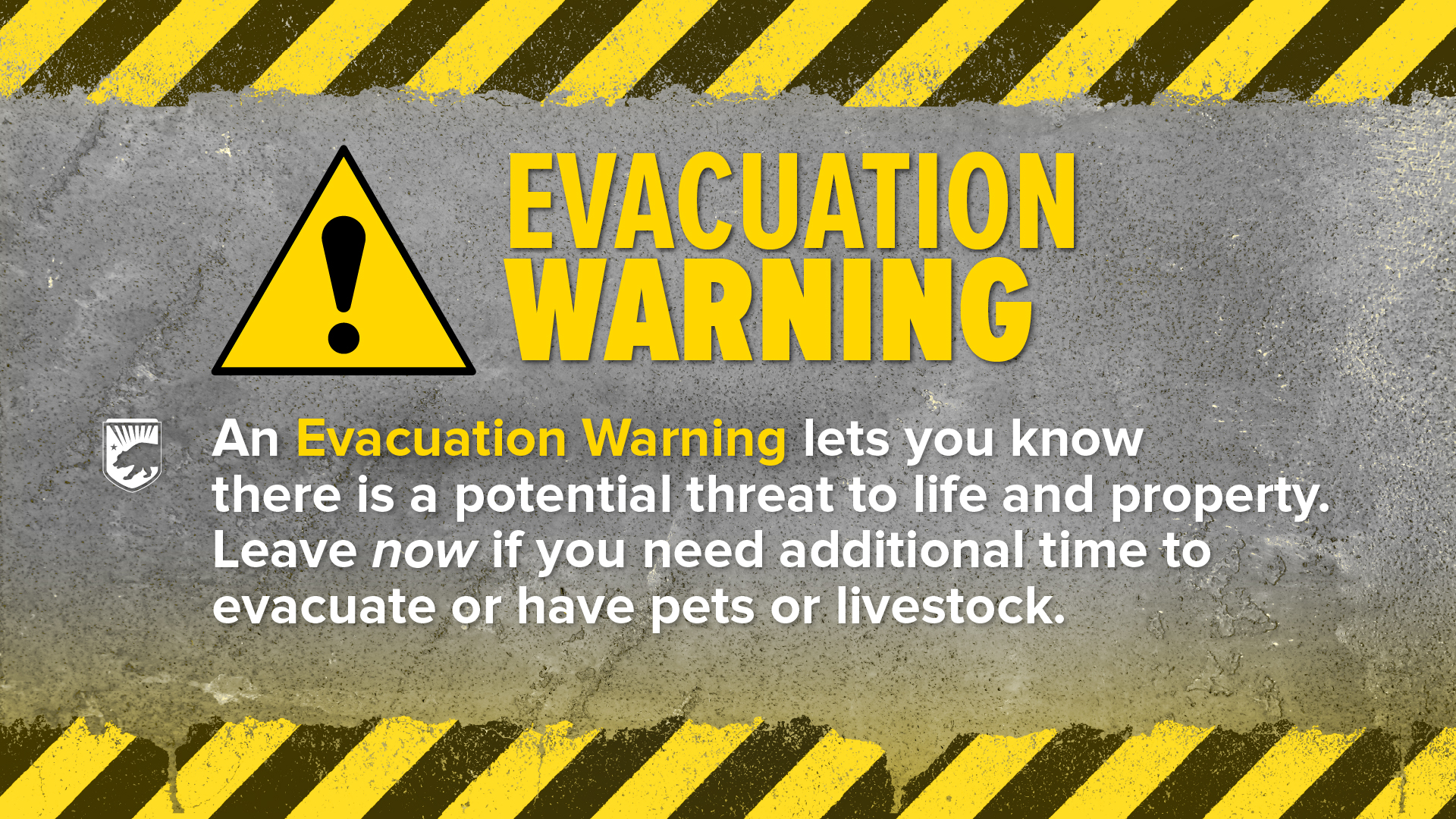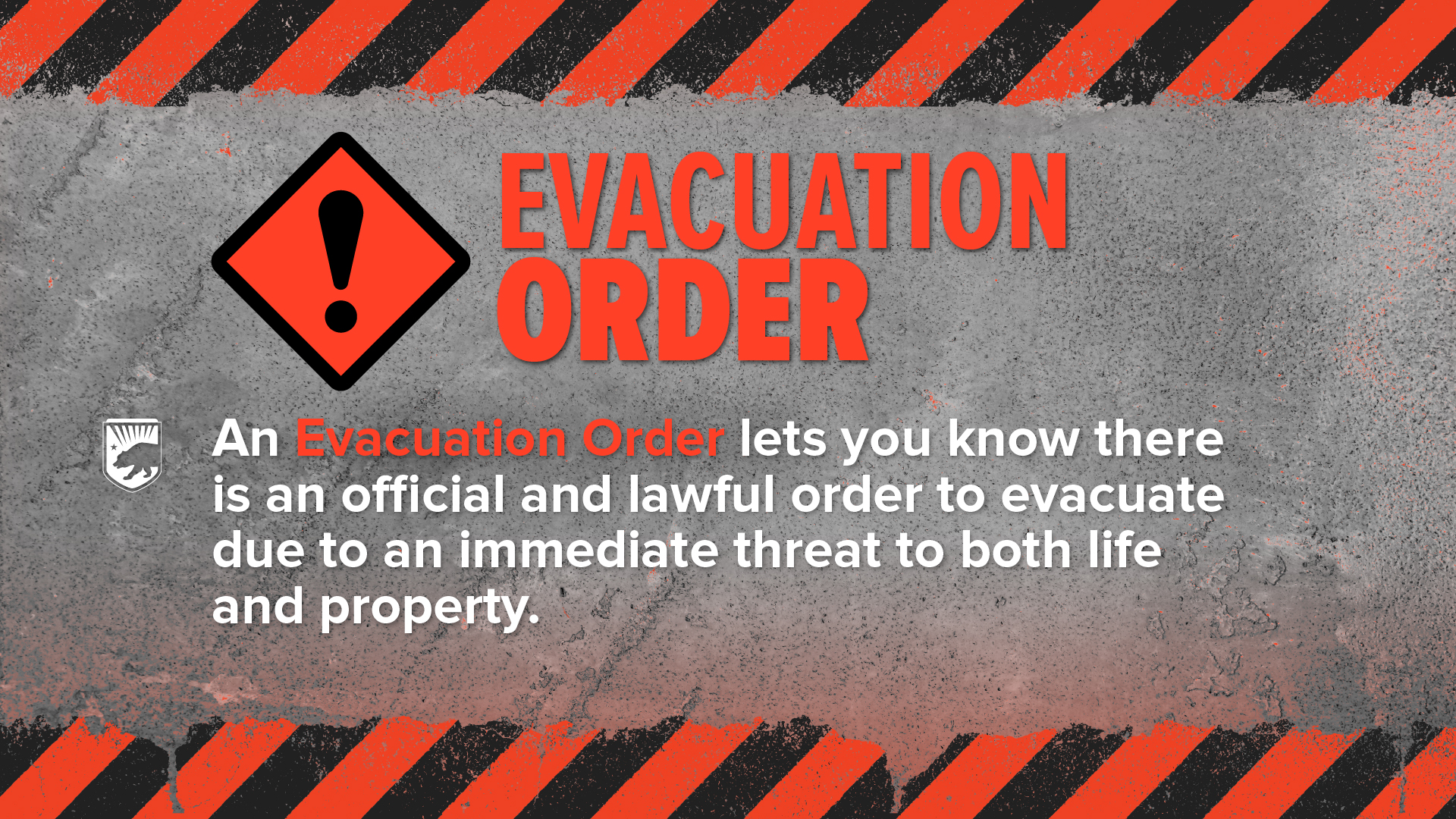Whether it’s a serious storm, flood, earthquake, wildfire, or other emergency, it is important to understand the difference between an evacuation warning and an evacuation order. In times of crisis, it can be confusing. The California Office of Emergency Services (Cal OES) wants you to be prepared.
Both warnings and orders are issued to keep the public informed and safe.

Evacuation Warning
An evacuation warning means there’s a potential threat to life or property. While it’s not a mandatory order, it’s important pay attention and prepare to leave.
When a warning is issued, assume an evacuation order could follow. This is your window to get ready: pack a go-bag, gather essential items, and make arrangements, especially if you have pets, large animals, or if you need extra time or assistance to leave.
If you or someone in your household may need more time to evacuate safely, don’t wait for an official order. Use the warning as your cue to go early. Those few extra hours or days could save your life.

Evacuation Order
An evacuation order means there is an immediate threat to life and property. This is not the time to wait or assume the danger will pass. Leave now. The earlier you leave the easier it will be to navigate the affected area and avoid traffic congestion.
An evacuation order is a lawful directive to leave the affected area, which is now closed to the public.
In this situation, it’s crucial to follow instructions from law enforcement and emergency personnel so you and your family can leave quickly and safely. Stay calm, stick to your evacuation plan, and watch for emergency vehicles on roadways.
Pack a Go Bag
When a disaster or emergency hits, you may need to act quickly. That’s why it’s important to pack a go bag with essentials ahead of time. If an evacuation order is issued, you won’t have time to stop and get things together.
Make sure your go bag is ready with the basics:
- Important documents
- Cash
- Medicine and any important medical info
- Phone charger and backup battery
Think about what you’d take if you only had two minutes to leave your home.
Got Pets? Don’t Forget About Them
If you have pets, it’s just as important to make sure they’re ready to go, too. You don’t want to be scrambling to find their stuff at the last minute. Pack a go bag for them with:
- A carrier for each pet
- Two-week supply of food and water
- Pet first aid kit
- ID tags
- Vaccination info
- Medications and dosing instructions
- Plastic bags for waste
- Leashes, collars and harnesses
What Happens After the Order to Evacuate?
Once an evacuation order is issued, pay attention to law enforcement and local emergency alerts. In some cases, responders won’t have time to go door-to-door. Leave as soon as you’re told.
What About an Evacuation Route?
Officials will identify a safe route based on where the incident is occurring and what areas are affected. Be aware of your surroundings and watch for hazards like:
- Downed power lines
- Washed-out roads
- Debris blocking the way
Don’t go back home if you forget something. It’s not worth the risk. Wait for officials to give the all-clear before returning. Going back too soon can put you and first responders in danger.
The bottom line: Be ready before you have to be. Emergencies don’t wait for anyone, so it’s best to be prepared. The more ready you are before an emergency, the faster and safer you can act when it counts.
